“The Analytical Engine weaves algebraic patterns, just as the Jacquard loom weaves flowers and leaves” - John Maeda
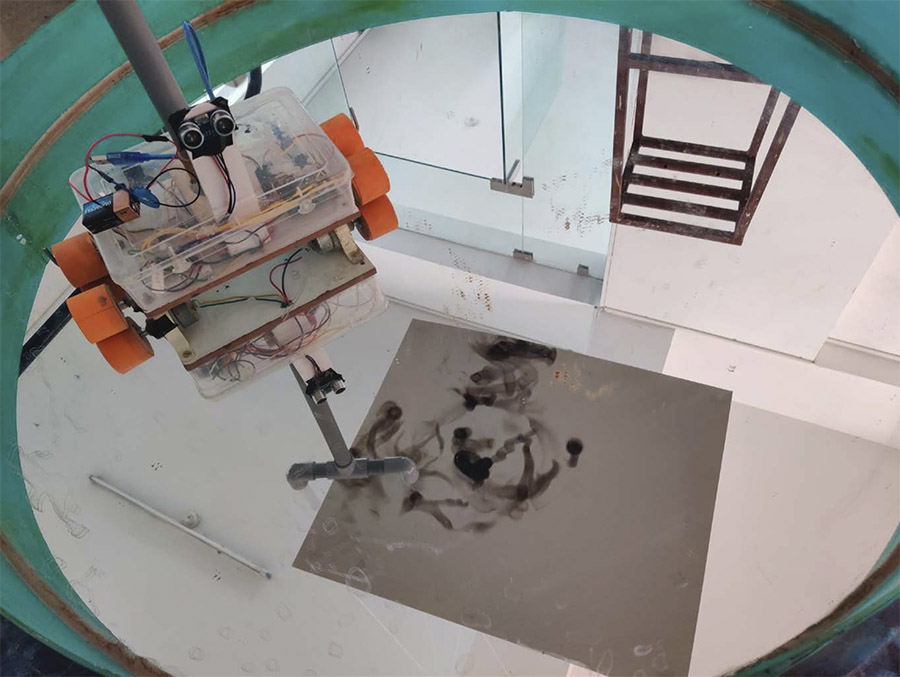
Machine painting with generative processes
Vision
Objects that ‘behave’ and ‘communicate’ have rapidly moved from the realm of science fiction to our homes, shelves and pockets. Products are no longer static, but are expected to interact, inform and guide. In a similar vein, data is now available in quantities larger than was imagined in the recent past. Patterns have to be seen and conveyed, often interactively in real-time.
We facilitate design and art professionals of the future, who can work in multiple contexts, make complex connections, and lead and manage change. We facilitate and inculcate working with autonomy towards a clear self-position, be it as an entrepreneur, a design lead or as an independent creative practitioner.
As emerging technologies become accessible, it becomes necessary to find ways in which they make a meaningful difference to the quality of people’s lives. The blockchain, which began as a niche technology is now being used to sign “digital artefacts”; these artefacts range from those with financial and security implications to digital artworks. While many of these technologies are actively used in spheres such as entertainment, their potential in other areas such as education and healthcare has much left uncovered. Innovation in these areas will be based on design-led computation.
Computation and algorithms allow a designer to break out of the static, to make products which evolve; while tangible materials remain as important as they have always been intangible materials like code and language enables the structure of objects to move from finite points to become more like a spectrum.
Design computation is an arena where the technical meets the human. As such, it welcomes students with a background in any part of this spectrum who want to build their capabilities across disciplines.
The M.Des in Design Computation at Srishti Manipal nurtures and supports students in their independent and creative inquiries – encouraging them to work speculatively while making and experimenting on concrete projects.
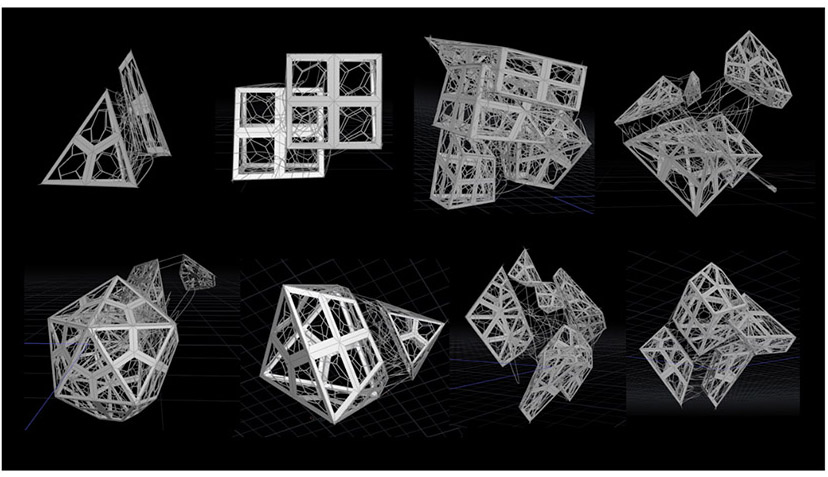 Using Voronoi algorithms to break shapes
Using Voronoi algorithms to break shapes
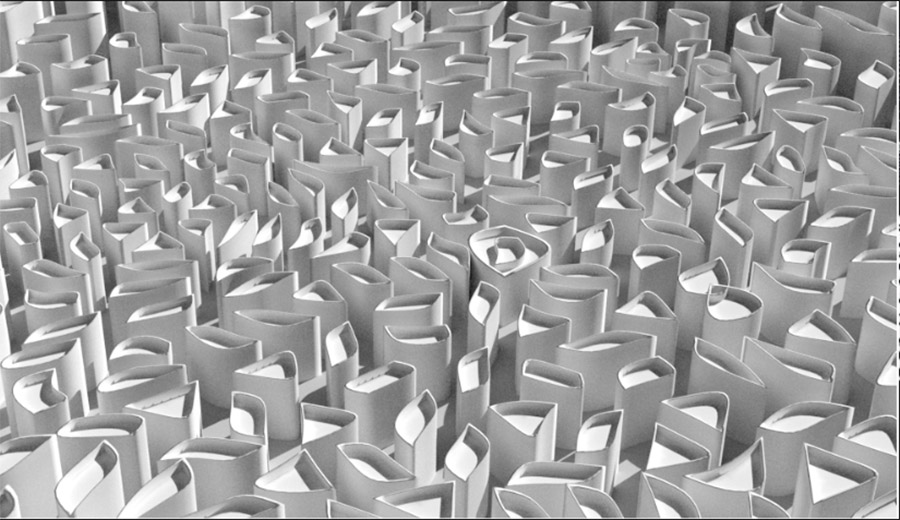
Procedural generation of towers
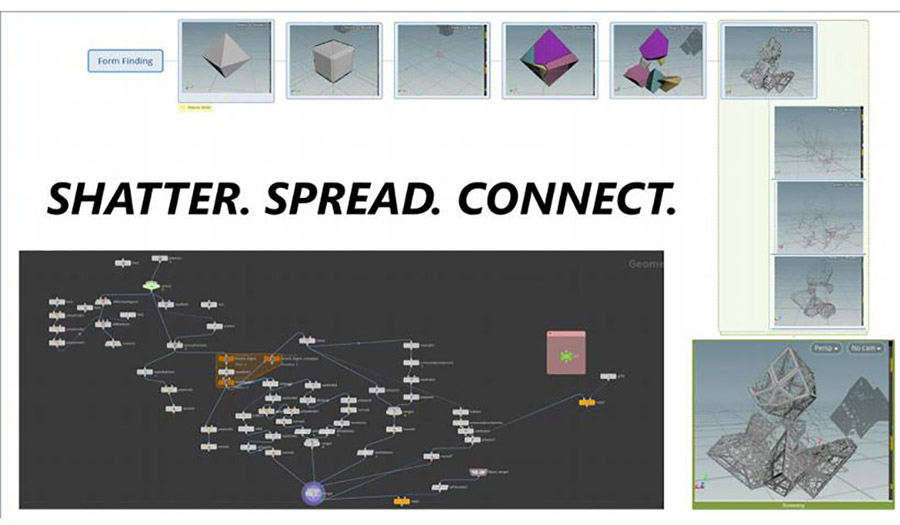
Algorithmically dealing with forces
Course Structure
- Disciplinary and Interdisciplinary studios
- Workshops
- Seminars
- Lines of Inquiries (Field work, Case Studies, Investigations, individual or Group Projects, Transdisciplinary Research)
- Theory and Understanding
- Independent Study
- Open Elective
- Practice
- Exhibitions
- Culminating Performances of Understanding (Portfolio, Transdisciplinary research, Projects, Colloquium, Capstone/Dissertation)
- Knowledge Enhancement (ability or skills)
Learning Approach
The program learning approaches include:
- Inter-disciplinary and participative: driven by contexts that involve integration with products and services.
- Application: of theories and frameworks working towards questioning and extending them.
- Learning to learn: to remain relevant when hardware changes and software libraries and tools rise and fall.
- Build: prototype, tinker and iterate are essential to learning.
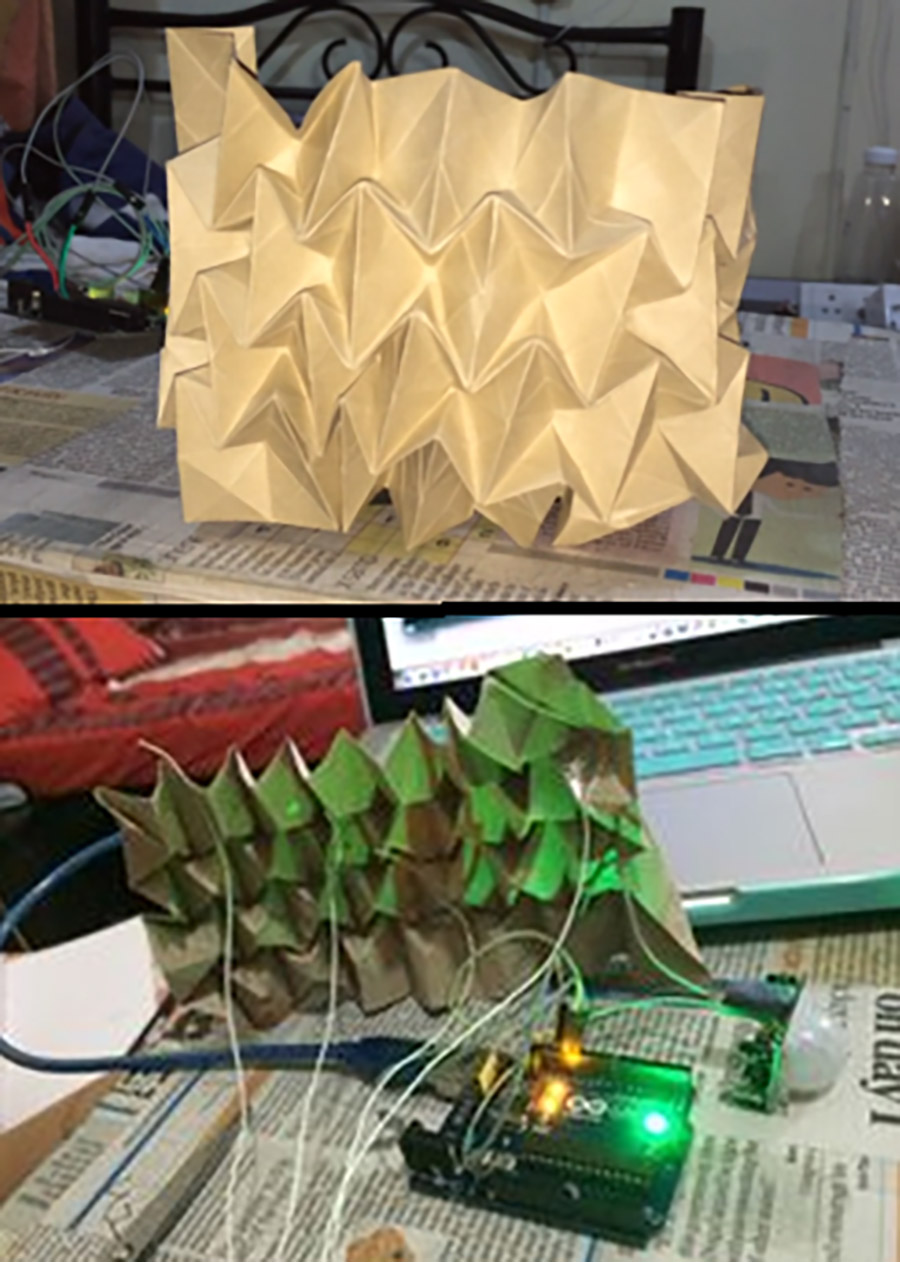
Paper that “beats”
Capability Sets
- Conceptualize ideas and interaction techniques using software sketching and prototyping
- Apply methods to visualise to data of various types from a variety of fields
- Build the information architecture of a system with a number of entities with differing functions and roles
- Learn new tools and techniques as needed using online forums, communities and documentation independently
- Implement algorithms in appropriate programming languages
- Analyse a conceptual system or product to find parts that are easy to build and elements that require new tools or resources
- Contribute in a group working on complex problems and identify the aspect that computation can be brought to bear on
- Beyond the process of testing and iteration to develop software that functions correctly, also consider aspect of interaction and user experience
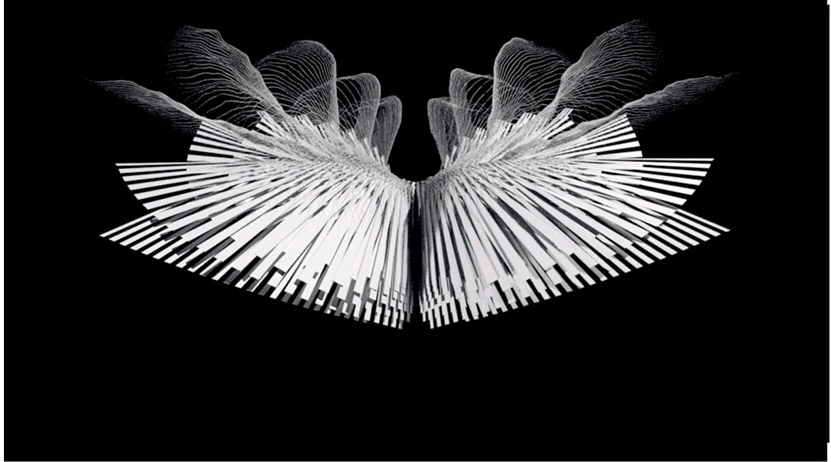
Generating volumes procedurally
Opportunities
Graduates of Design Computation at Srishti Manipal will be able to contribute in the areas of implementation of systems design, data visualization, designing smart objects for the Internet of Things in conjunction with systems that support them. They could shape innovative products and services in the (traditional) areas of education, healthcare and entertainment.
People
Enquiries

Disciplinary Intersections
The program is informed by the following learning disciplines
Contemporary Textile Practices
Experimental Media Arts
Game Art, Design and Development
Information Design
Interaction Design
Product and Interface Design
Social Innovation
Research and Collaboration
The students under this program will have the opportunity to work with the following centers and labs at Srishti Manipal.
The Center for Experimental Media Arts (CEMA)
Center for Education, Research, Training, and Development (CERTAD)
Frugal Design DESIS Lab
Impact Edge
Srishti Labs (SLabs)
FAQs
In recent times, computation has become ubiquitous. Objects are smart and talk to each other, data is available though we may not always know what to do with it and we have tremendous computational power sitting in our bags and pockets. This course looks at meaningfully building and using such resources in a way that works for people. Contexts such as media, education and healthcare are examples that are of interest. You will need to learn and use new technologies, prototypeand iterate to improve on what you have made.
The program in Design Computation sits at the intersection of Design and Computation. Students will have to be willing to think algorithmically, and use both a technological as well as human viewpoints. Prospective students may come from a strong engineering background, with a view to hone their knowledge with ideas of design or from a design background wanting to leverage this with the proficiency of working with technology in a hands-on manner.
As a Design Computation student, you will be expected to develop an area of inquiry which you will pursue over the course. Your inquiry will guide the ideas and applications that you learn. You will attend master classes and be mentored and guided on the technologies you need to learn and the design principles on which the use of those technologies are based. You will be working in trans-disciplinary settings, and learning ideas from your peers who come from different backgrounds and disciplines. Most interactions in Srishti happen in studios where the emphasis is on learning by doing.
While the learning units are listed in the prospectus, you will learn also learn to look at users, their needs, and how technology could intervene in their situations. As an example: you will learn about data visualisation, and the cognitive and technological principles underlying various visualisations. But in a given context, while the most “magical” visualisation may not matter, the fact that your visualisation is accessible to people with older devices may be crucial. You will also have the opportunity to work with cutting-edge applications of ideas such as the blockchain which is breaking into the art world as a way of authenticating digital content.



